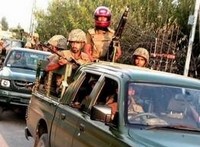In March 2008, a widow in Pakistan’s Khyber Agency made a public appeal to Mangal Bagh Afridi, the leader of the Lashkar-e-Islam (LeI) militant group operating in the area, to help arbitrate a land dispute. Several of her family members had been killed in the dispute, and the formal justice system was not responding to the crimes. Bagh took up her case, ruled in her favor and promptly sent armed militia members to punish the people he determined were responsible for the deaths. Soon afterward, wealthy families, often the targets of kidnapping and extortion, started appealing to Bagh for help as well. Before long, Bagh came to be seen as a leader capable of arbitrating disputes and providing swift justice in Khyber Agency, and locals welcomed LeI’s presence under his leadership. With popular support, he came to control much of the area.
Mangal Bagh’s rise to power is symptomatic of a broader problem in Pakistan: Many of the country’s formal governance structures barely function in some parts of the country, leaving locals to fend for themselves or turn to nonstate groups for services and help. The same dynamic was on display in in the Swat Valley. Indeed, the Tehrik-e-Nifaz-e-Shariat-e-Mohammadi (TNSM, or the Movement for the Enforcement of Islamic Law) was created as far back as 1992 as a response to popular demands for more efficient justice systems in Swat, where the formal justice system had been weak and corrupt. Popular support for both LeI and TNSM derived, at least initially, from the belief that they could bring swift justice based on a fair and equitable interpretation of Islamic values. Both groups went on to control significant swathes of territory.
But as the two groups grew in strength, they began to abuse their power. They targeted music shops, made men grow beards and demanded that women adhere to a very restrictive code of conduct in keeping with their interpretation of Islamic values. As the groups’ influence grew, so did their brutality. Public floggings and beheadings became commonplace. The swift and equitable justice that local populations had expected ended up creating an atmosphere of fear and intimidation. The enthusiastic support TNSM and LeI had enjoyed early on turned into widespread opposition and demands for their removal.

